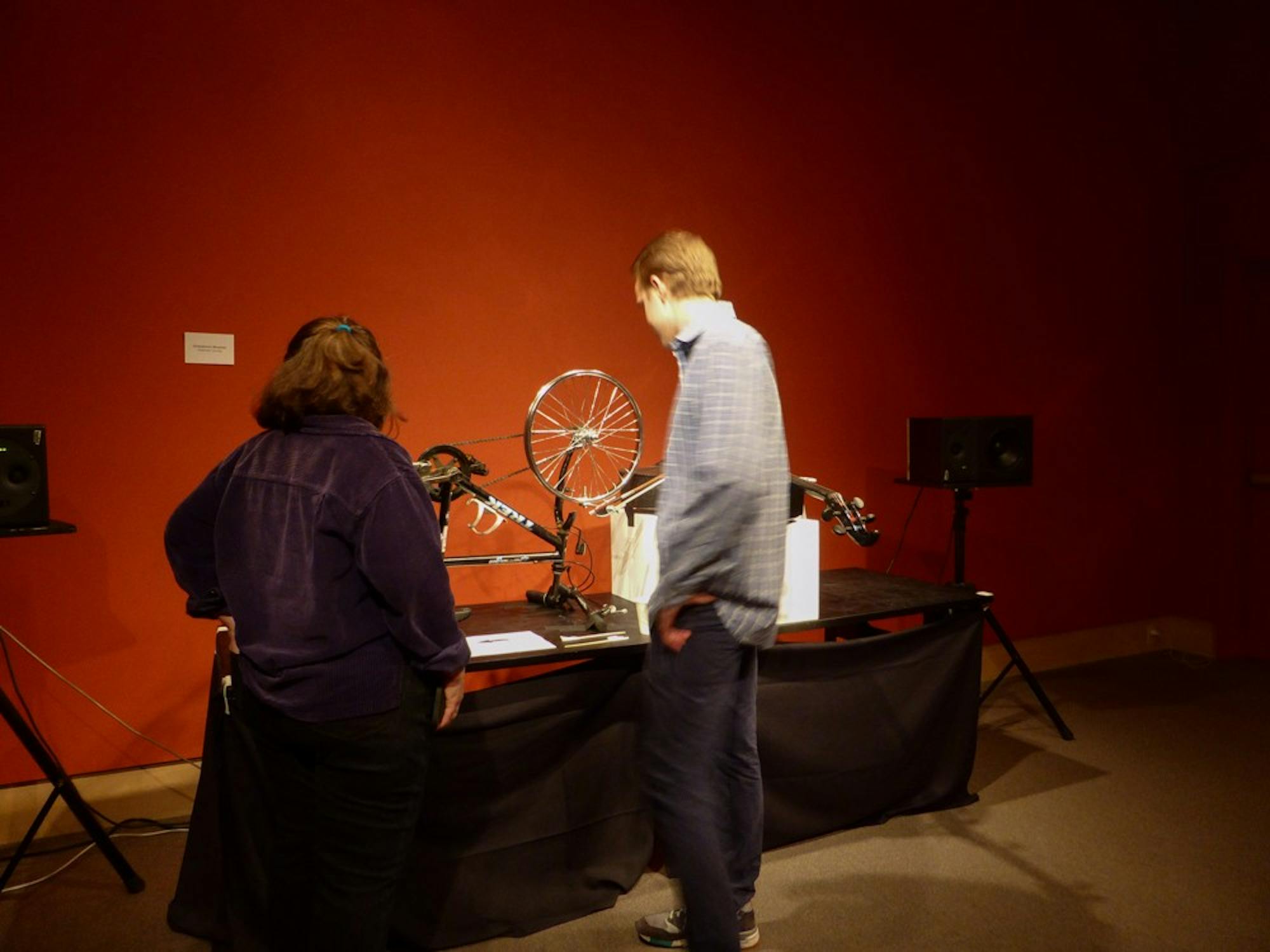Moving images, flashing lights and creatively designed seats invited attendees to interact with the art displayed last night at the fifth annual Digital Arts Expo. The event included several segments and showcased a collaborative range of digital works in music, studio art, film and 3D printing at the Hood Museum of Art.
Because the exhibition incorporates several departments such as computer science and digital humanities, music professor Michael Casey called DAX a festival of arts and innovation.
“It’s really looking at how technology, science and art are forms of innovation and how they inform each other,” Casey said.
In 2012, computer science professor Lorie Loeb started the DAX, which featured a computer science animation and interactive works. Over the years, the exhibition has grown to include more works and sponsors. Because of this, Loeb said the leadership and planning are more dispersed.
This year, Corinne Romano ’15 served as DAX’s director. She said that her goal for the exhibition was to showcase as many student projects as possible in a great venue where they can truly show off their skills.
Because the Hood is closed for renovations, the exhibition had the unique opportunity to display its works there. In previous years, the DAX has been held at the Top of the Hopkins Center for the Arts, the Hop Garage and Spaulding Auditorium.
The evening opened in the Hood Auditorium with a film screening featuring animations and video art, which Romano said students edited and put together. The short films ranged in subject matter from the history of radio at Dartmouth to witty stories about plants and animals. There were even videos with no storyline at all. Instead, viewers were challenged to focus entirely on the visual display.
After the viewing, attendees had the opportunity to explore the Hood’s galleries and admire sculptures, images and installations. Both undergraduate and graduate students contributed to the galleries as well as professors, who collaborated with students. Some of these projects included 3D printed figurines that float when people place them in water and innovative chairs that people could sit or stand on.
For those intrigued by the possibility that a computer can write poetry, the exhibition included an event called “DigiLit & PoetiX.” Using the Turing test, which determines a machine’s ability to exhibit behavior comparable to or indistinguishable from that of a human, the 10-minute segment gave the audience the chance to guess whether the poetry and short stories were created by humans or a machine. If the audience guessed the work actually created by a machine was created by a human, the machine’s creators would receive a $3000 cash prize, Casey said.
The night ended in the Lathrop Gallery with “Algorhythms/DJ 2RNG T3STS Dance Party,” which also included a Turing test element. Participants listened to the songs played and guessed whether the DJ was a human or a computer.
National Public Radio’s Joe Palca announced the winners live at the event.
Before the event opened, Romano said that she is hopeful that the exhibition will show people all the things that digital art can encompass.
“A lot of people don’t really realize what digital arts is because it’s so big and so broad,” Romano said. “However, there really is no boundary.”
Since the DAX’s debut, the importance and presence of digital art on campus has increased as society has become increasingly digital. This is reflected in the expansion of the DAX each year. In 2014, the exhibition introduced a high-end cyber fashion show element, which featured a wedding dress embedded with lights. Last year’s DAX included an animation screening that incorporated architecture clips and music simulations.
“I think the importance of this annual exhibition is so people realize how versatile digital art really is,” Romano said.
Similarly, digital arts’ significance is demonstrated by the increasing popularity of the digital arts minor, which was introduced to the computer science department in 2007 and has since expanded to include courses within the film and media, studio art, theater and engineering sciences departments. Romano said this gives students a wide range of possibilities for projects.
Regarding the future of digital arts and next year’s DAX, Loeb said she is hopeful, especially now that new technology is becoming less expensive and more accessible.
“As technology becomes more of a tool, we’re able to interact with the art in different ways and take it into new realms,” Loeb said.




